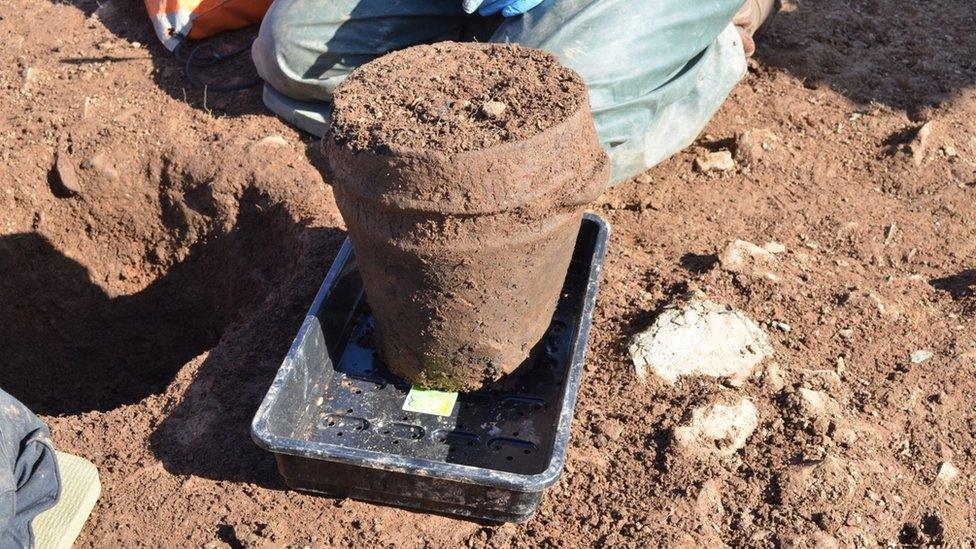Shropshire Bronze Age gold pendant 'amazingly rare'
- Published
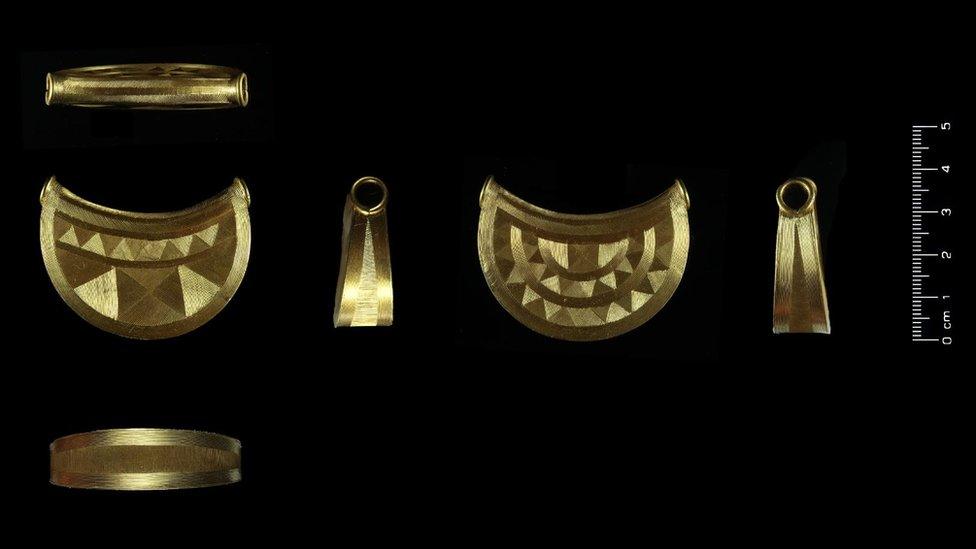
The bulla, pictured at different angles, was a "mind-blowing" find for the metal detectorist
A pendant found by a metal detectorist has been described as "one of the most significant pieces of Bronze Age gold metalwork" ever discovered in Britain.
Details of the "amazingly rare" artefact were shared on Tuesday by the British Museum, which said the craftsmanship would have been "almost unequalled in the period".
The detectorist's career-high discovery was made in Shropshire in May.
The museum says only one other similar item had been found in Britain.
Latest news and updates from the West Midlands
The Shropshire Marches bulla - so named after the Latin word for bubble - is a crescent-shaped hollow pendant suspended from a gold tube, decorated with geometric patterns.
Peter Reavill, Shropshire Council's finds liaison officer, said: "The design is such that the play of light over the surface is what you would see most... shimmering, dancing and ever different".
He added it would have been "stunning when viewed by firelight or in bright sunlight".

You might also be interested in:

The find, which dates from 1000-750 BC, is to be examined by the Shropshire coroner at a treasure inquest.
It will be further analysed by specialists at the museum, who hope to investigate the area where it was found.
A comparable piece was discovered in the 18th Century in Manchester during canal engineering works, the museum said, adding it was sold in 1806 and its whereabouts were unknown.

Follow BBC West Midlands on Facebook, external, on Twitter, external, and sign up for local news updates direct to your phone, external.
- Published23 November 2018
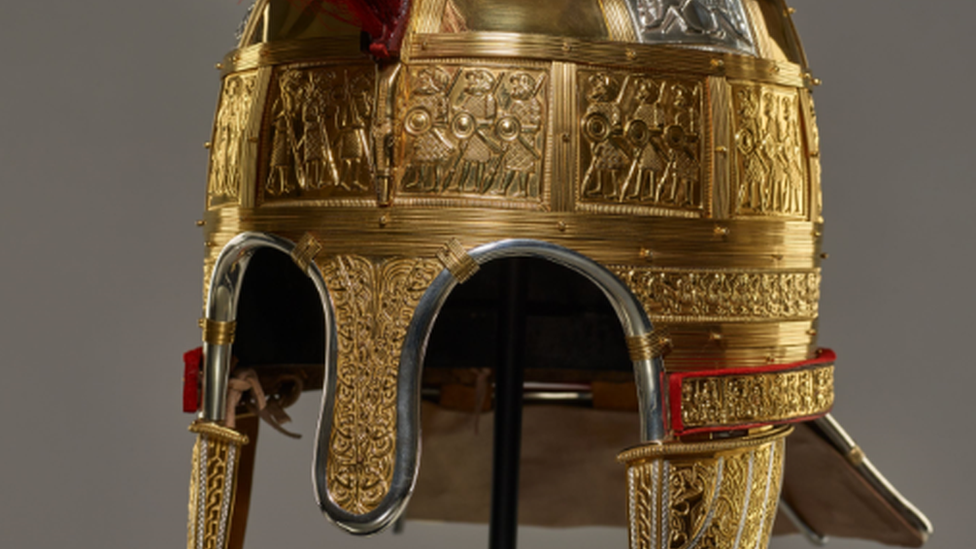
- Published14 August 2018
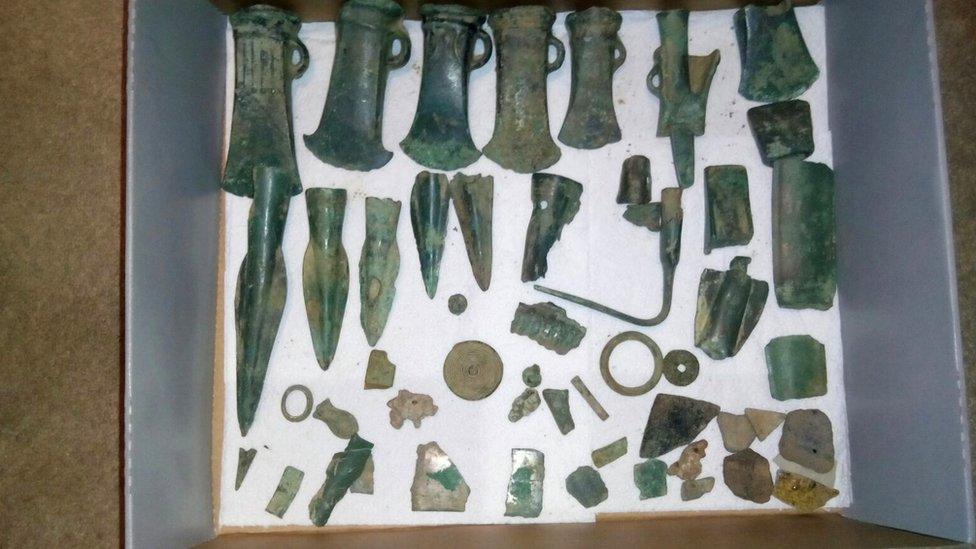
- Published6 October 2018
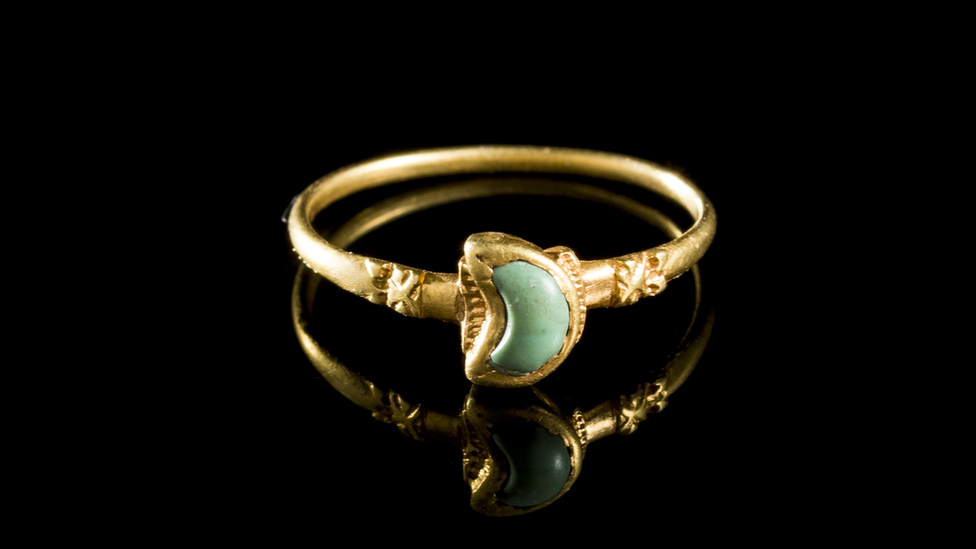
- Published17 April 2018
